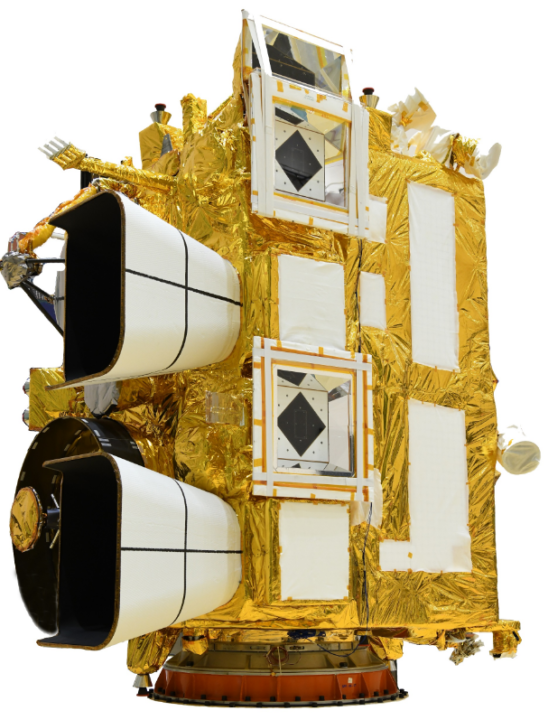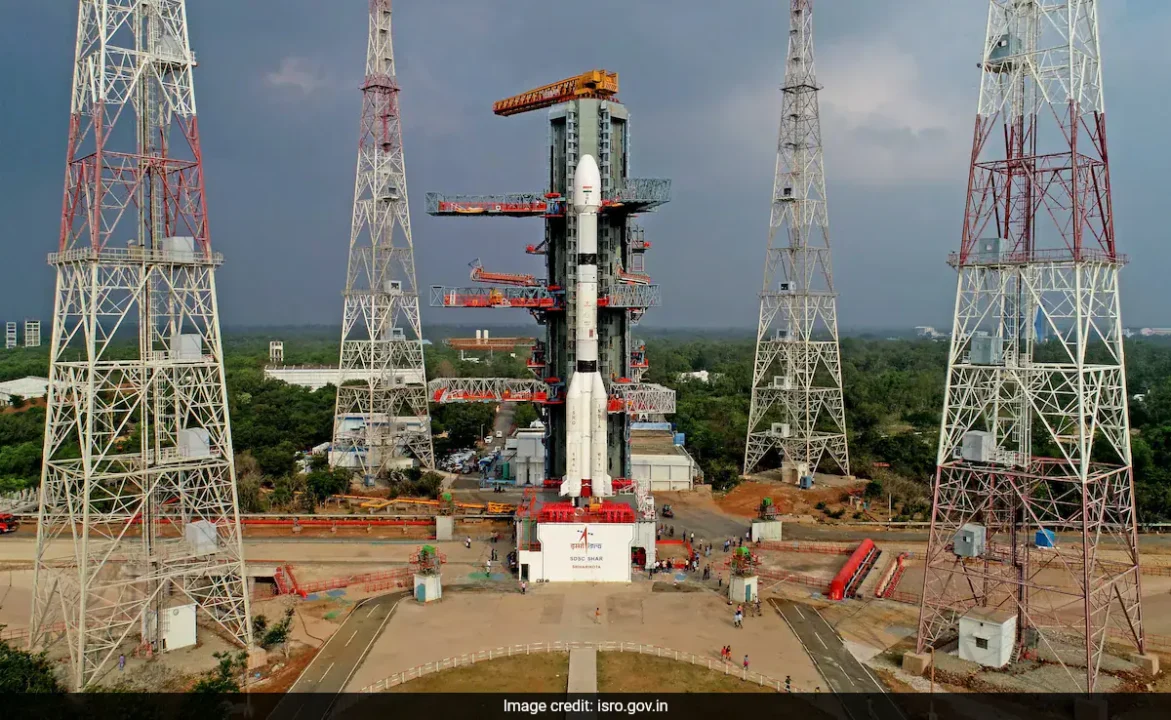Explore how INSAT-3DS, India’s meteorological satellite, is revolutionizing weather forecasting and disaster warning systems, marking a significant leap in space exploration.

A Remarkable Leap in India’s Meteorological Observation Capabilities
India celebrated a significant triumph in its space exploration odyssey as it flawlessly launched its third-generation meteorological satellite, INSAT-3DS, into orbit. This achievement, marked by the successful deployment of a 2,274 kg satellite, showcases India’s prowess in advancing meteorological observation capabilities.
The Genesis of INSAT-3DS

INSAT-3DS, a successor to INSAT-3D and INSAT-3DR, stands as a pinnacle of meticulous design aimed at revolutionizing meteorological observations. It promises enhanced monitoring of land and ocean surfaces, fortifying weather forecasting, and augmenting disaster warning systems. The Indian Space Research Organisation (ISRO) has underscored the pivotal role of INSAT-3DS in amplifying meteorological services alongside existing satellites.
The Majestic Launch

The GSLV rocket, towering at 51.7 meters and weighing 420 tonnes, embarked on its journey from the second launch pad, creating a spectacle against the evening sky. With a resounding roar, it propelled INSAT-3DS towards space, leaving behind a trail of bright orange fire. Minutes later, INSAT-3DS achieved its milestone by entering the Geosynchronous Transfer Orbit (GTO), marking a significant stride towards its final destination in the Geo-Stationary Orbit (GSO).
Empowering Meteorological Services
INSAT-3DS heralds a new era in meteorological data acquisition and analysis. Departments under the Ministry of Earth Sciences, including the India Meteorological Department (IMD) and the National Centre for Medium-Range Weather Forecasting (NCMRWF), are poised to leverage its data for enhanced weather forecasts and vital meteorological services.
Advanced Payloads and Collaborative Efforts
The satellite’s advanced payloads, including Channel Imager, Channel Sounder, Data Relay Transponder (DRT), and Satellite-aided Search and Rescue (SA&SR) transponders, promise comprehensive data collection and dissemination. Notably, Indian industries played a significant role in INSAT-3DS’s development, showcasing collaborative efforts driving India’s space exploration initiatives.
Conclusion
India’s successful launch of INSAT-3DS signifies a remarkable leap in meteorological observation capabilities, promising enhanced weather forecasting and disaster warning systems. This achievement underscores India’s commitment to space exploration and technological advancement.
Created with AIPRM Prompt “Article rewriter powered by Rank Math V2”
India Successfully Launches 3rd Gen Meteorological Satellite INSAT-3DS Into Orbit
A Remarkable Leap in India’s Meteorological Observation Capabilities
India celebrated a significant triumph in its space exploration odyssey as it flawlessly launched its third-generation meteorological satellite, INSAT-3DS, into orbit. This achievement, marked by the successful deployment of a 2,274 kg satellite, showcases India’s prowess in advancing meteorological observation capabilities.
The Genesis of INSAT-3DS
INSAT-3DS, a successor to INSAT-3D and INSAT-3DR, stands as a pinnacle of meticulous design aimed at revolutionizing meteorological observations. It promises enhanced monitoring of land and ocean surfaces, fortifying weather forecasting, and augmenting disaster warning systems. The Indian Space Research Organisation (ISRO) has underscored the pivotal role of INSAT-3DS in amplifying meteorological services alongside existing satellites.
The Majestic Launch
The GSLV rocket, towering at 51.7 meters and weighing 420 tonnes, embarked on its journey from the second launch pad, creating a spectacle against the evening sky. With a resounding roar, it propelled INSAT-3DS towards space, leaving behind a trail of bright orange fire. Minutes later, INSAT-3DS achieved its milestone by entering the Geosynchronous Transfer Orbit (GTO), marking a significant stride towards its final destination in the Geo-Stationary Orbit (GSO).
Empowering Meteorological Services
INSAT-3DS heralds a new era in meteorological data acquisition and analysis. Departments under the Ministry of Earth Sciences, including the India Meteorological Department (IMD) and the National Centre for Medium-Range Weather Forecasting (NCMRWF), are poised to leverage its data for enhanced weather forecasts and vital meteorological services.
Advanced Payloads and Collaborative Efforts
The satellite’s advanced payloads, including Channel Imager, Channel Sounder, Data Relay Transponder (DRT), and Satellite-aided Search and Rescue (SA&SR) transponders, promise comprehensive data collection and dissemination. Notably, Indian industries played a significant role in INSAT-3DS’s development, showcasing collaborative efforts driving India’s space exploration initiatives.
Conclusion
India’s successful launch of INSAT-3DS signifies a remarkable leap in meteorological observation capabilities, promising enhanced weather forecasting and disaster warning systems. This achievement underscores India’s commitment to space exploration and technological advancement.
FAQs
What is INSAT-3DS?
INSAT-3DS is India’s third-generation meteorological satellite designed to enhance meteorological observations and bolster weather forecasting and disaster warning systems.
What are the key objectives of INSAT-3DS?
The primary objectives include Earth surface monitoring, oceanic observations, and atmospheric parameter profiling.
How does INSAT-3DS contribute to meteorological services?
INSAT-3DS provides invaluable data for enhanced weather forecasts and vital meteorological services, benefiting various departments under the Ministry of Earth Sciences.
What are the advanced payloads of INSAT-3DS?
INSAT-3DS boasts advanced payloads such as Channel Imager, Channel Sounder, Data Relay Transponder (DRT), and Satellite-aided Search and Rescue (SA&SR) transponders.
What role did Indian industries play in INSAT-3DS’s development?
Indian industries played a significant role in developing INSAT-3DS, showcasing collaborative efforts driving India’s space exploration initiatives.